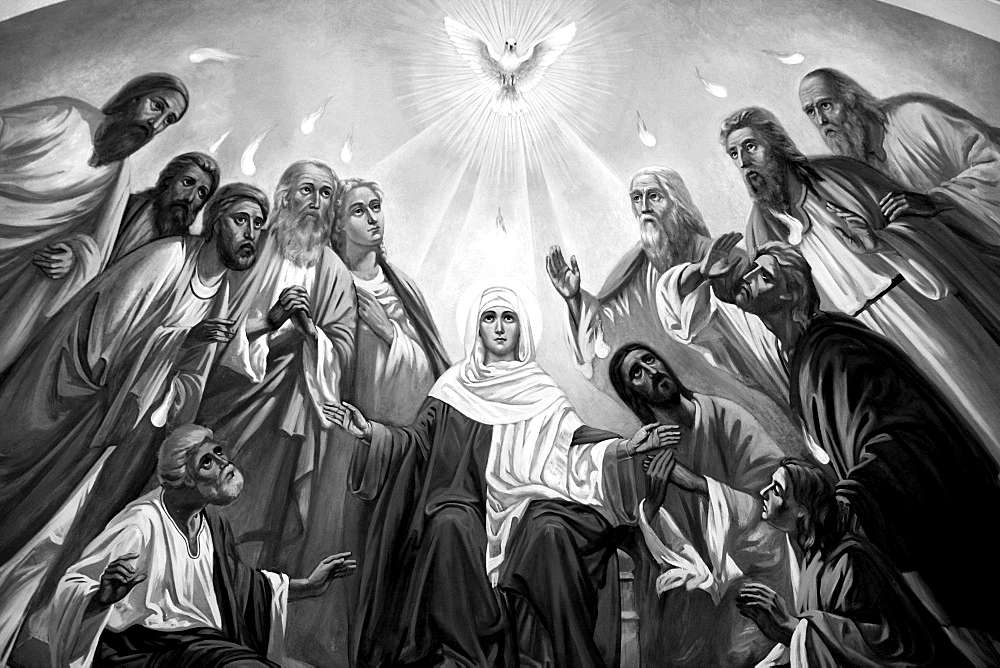

Sexuality in Biblical Perspective
Dr. Shaibu Abraham
In the later half of the 20th century, the world experienced a sexual revolution unlike previous centuries that reshaped views on marriage, family, and sexuality. Before the industrial era, families were the foundation of society; survival depended on marriage, childbearing, fidelity, and strong kinship ties. Marriage was primarily pragmatic—arranged for partnership, economic stability, kinship survival, and social or political power—where women were valued as child-bearers and men as labourers. However, the post-industrial West saw a major shift from extended families to nuclear ones, with sexuality detached from communal concerns and redefined as a matter of personal interest and self-expression. These trends spread into all over the world. Industrialized capitalist societies made it possible to thrive as single individuals. This cultural shift also brought reproductive freedom, divorce, feminism, dating, and multiple sexual experiences. Consequently, emotional and intimate ties moved from community networks to privatized homes, with sexuality becoming central to personal identity, self-interest and fulfilment in the modern world.
In this context, it is significant to explore the biblical concept of marriage, sex, sexuality, and related issues. A scriptural understanding of these matters will help us navigate in a sexually promiscuous society, where families are increasingly threatened by individualistic interests and the trends promoted through social media. Therefore, in the following pages, we will examine the biblical perspective on marriage, sexuality, divorce, and adultery to ascertain what Scripture teaches about them.
Marriage in Biblical Setting
To understand human sexuality, it is vital to place it within the biblical understanding of marriage. When God created humans, He made them in His own image and likeness, creating them as “male and female,” and declared them “very good/beautiful.” (Gen. 1:26–27, 31). Humanity was designed to be a glorious reflection of God’s image and character. God’s first command to them was to “be fruitful and multiply, and fill the earth” through reproduction (Gen. 1:28).
After naming the beasts of the field and the birds of the air, the man found no true companion. Therefore, God provided the woman as one who would share intimate relationship with him, and he recognized her as his own. Together they became “one flesh” (Gen. 2:24). This bond of companionship formed the foundation of marriage, strengthened by mutual acceptance and sexual attraction. However, this blessing should not be understood merely as a command for reproduction; rather, sexuality is also about companionship, completion, and unity—without which there is loneliness (Gen. 2:18). As God later said to the woman, “Your desire will be for your husband, and he will rule over you” (Gen. 3:16). Thus, the Bible presents marriage as essential to societal well-being, with sexuality serving as the bond that cements the marital union.
God’s blessing, “be fruitful and increase in number,” was repeated to Noah and his sons after the great Flood (Gen. 9:1). Thus, human sexuality was originally rooted in God’s creation plan within the beauty of a sinless world and continues even after the fall and humanity’s sinful nature.
Although damaged by sin, marriage remains the ultimate human relationship involving intimacy, privacy, and liberty. The Old Testament writers consistently upheld a high view of marriage. It is described as a covenant in which a couple separates from their parents to become “one flesh” (Gen. 2:24). The societal value placed on marital sex is evident in Deuteronomy, where newly married men were exempt from military service for a year so they could bring joy to their wives (Deut. 20:7; 24:5). Families demanded sexual fidelity, and the best safeguard was marital satisfaction: “Find joy in the wife of your youth … let her breasts satisfy you at all times; be infatuated with her love always” (Prov. 5:18–19).
Jesus reaffirmed the ideal for marriage established in the creation narrative. He set aside later historical developments within Old Testament history and directed his questioners and listeners back to God’s original design. Jesus said, “In the beginning God made them male and female. For this reason, a man will leave his father and mother and be joined to his wife, and the two will become one flesh, so they are no longer two but one flesh” (Mk. 10:6–7; cf. Gen. 1:27; 2:24). He then added a new word of command, making explicit what was implicit in creation: “What God has joined together, let no one separate” (Mk. 10:9). Thus, Jesus taught that marriage is a divine institution, intended to be monogamous, lifelong, and an intimate spiritual and physical union of a man and a woman, united by God so that they are no longer two but one.
Paul also presented marriage as inviolable and permanent. Addressing the Corinthian church, he wrote: “To the married I give this command—not I, but the Lord—that a wife must not separate from her husband. But if she does, she must remain unmarried or else be reconciled to her husband. And a husband must not divorce his wife” (1 Cor. 7:10–11).
Paul also refers to the Old Testament law: “…the law binds a woman to her husband as long as her husband is living, … but if her husband dies, she is free from that law” (Rom. 7:1–3). The idea of mutuality within the marriage bond is further emphasized in Ephesians, where both husbands and wives are exhorted to submit to one another out of reverence for Christ (Eph. 5:21). Paul highlights the sacredness of marriage by using it as an analogy of the profound bond between Christ and His bride, the Church. He declares, “This is a profound mystery, but I am talking about Christ and the church” (Eph. 5:32). Thus, the Bible places human sexuality within the institution of marriage, and any sexual activity outside of marriage is considered sinful.
Sex and Sexuality
As we have seen above, the biblical concept of sex and sexuality is firmly rooted in the framework of marriage, where the fulfilment of deeply pleasurable sexual desires is understood as part of God’s good creation. Yet, given humanity’s sinful nature and the prevalence of sexual violations, Scripture also recognizes the constant threat to God’s design. Therefore, the Bible sets clear boundaries by forbidding unacceptable relationships, with varying levels of punishment. In the Old Testament, adultery, incest, and other forbidden acts are strictly prohibited by law (Lev. 18; 20; Deut. 27).
At the same time, Scripture also celebrates human sexuality. The Song of Songs offers a strikingly positive portrayal of erotic love, openly affirming the passion between a woman and her lover. Traditionally read as an allegory of God’s love for His people, the text also reveals its literal beauty: sensuality and admiration of one another’s physical form (male and female) are depicted as sources of joy, satisfaction, and celebration. The poem highlights both the delight of fulfilled desire and the ache of longing, showing how love’s passion strengthens intimacy. Even in a broken world, lovers can transcend barriers to embrace the God-given goodness of sexual pleasure. In such relationships, passion enables vulnerability, mutual delight, and the flourishing of sexuality as God intended.
Jesus also understood the purpose of human creation and affirmed the model for sexual behaviour. This is evident in His words: “For this reason a man shall leave his father and mother and be joined to his wife, and the two shall become one flesh. So they are no longer two, but one flesh” (Matt. 19:5–6; Mark 10:6). Here, Jesus emphasizes the term ‘one flesh’ from the creation mandate, affirming that marriage is intended for sexual intimacy and fulfilment as God originally designed, and that it should not be replaced by alternative sexual practices.
Writing within a tradition where a woman was often regarded as her husband’s possession, Paul redefined marriage by commanding both men and women to give themselves sexually to one another (1 Cor. 7:4–5), modelling the self-giving love of Christ. He instructed: “The husband should give to his wife her conjugal rights, and likewise the wife to her husband… Do not deprive one another except perhaps by agreement for a set time…” (1 Cor. 7:3–5). Paul also warned that intercourse with a prostitute makes one “one flesh” with her, highlighting that sexual union creates a bond first revealed in the creation mandate (1 Cor. 6:16). Furthermore, he noted that abstaining from marital intimacy could open the door to temptation of Satan, and therefore, “each man should have his own wife, and each woman her own husband,” for “it is better to marry than to be aflame with passion” (1 Cor. 7:2, 9).
In relation to sexuality, it is important to recognize that while natural sexual desire may drive us toward others, it cannot by itself create or sustain true loving relationships. According to Scripture, erotic desire is not simply about personal pleasure but about union with another person (1 Cor. 6:16). Sexual desire is humanized and personalized only within the context of a committed relationship of love. Therefore, Scripture rejects casual sexual encounters outside marriage, since they do not establish genuine personal relationships. Such encounters are dehumanizing, reducing the body to a mere instrument of pleasure. By contrast, the biblical concept of becoming “one flesh” upholds the dignity and value of the person within sexual union.
In biblical perspective, neither sexual appetite nor erotic love alone is sufficient to constitute Christian marriage and sexuality. True sexual union requires a permanent commitment, rooted in the Creator’s will (Matt. 19:3–10). For Christians, this permanence is further grounded in the New Testament teaching, which calls husbands to love their wives as Christ loves His bride, the Church—with agape love, a God-given and Christlike love—and wives to be subject to their husbands, just as the Church fully obeys Christ (Eph. 5:25–32).
Divorce and Remarriage
Along with the biblical perspective on marriage and sexuality, divorce is also regarded as contrary to God’s original intent and as an act hated by Him (Mal. 2:16). Nevertheless, the Old Testament acknowledged the stubbornness of human will (Mk. 10:5) and permitted divorce and remarriage under certain conditions (Deut. 24:1–4). If a husband found “some indecent thing” in his wife, he was required only to provide a certificate of divorce and send her away (Deut. 24:1–4; Hos. 2:2).
Jesus, however, transcended these stipulations by teaching that Moses permitted divorce because of the “hardness of heart,” thereby compromising God’s original will revealed in creation (Mk. 10:5–6; Matt. 19:8). With the inbreaking of the kingdom of God, Jesus revoked this concession and restored God’s original design. He declared that remarriage after divorce constituted adultery, since in God’s eyes the first marriage remained valid despite a divorce certificate. Jesus even warned that marrying a divorced woman amounted to adultery (Matt. 5:32; Luke 16:18). For Him, sexual purity outweighed personal gratification.
Similarly, Paul explicitly referring to Jesus’ command on divorce (1 Cor. 7:10–11), introduced one exception: when an unbelieving spouse insisted on leaving. In such cases, the believer was “not bound” (1 Cor. 7:15) and thus free to remain unmarried or remarry. However, when a believer initiates divorce, Paul commanded that they “remain unmarried or else be reconciled” (1 Cor. 7:11).
Adultery
Contrary to modern attitudes and practices, the Old Testament views extra-marital sexuality as a grave sin, prescribing death for both parties involved in adultery (Exod. 20:14; Deut. 5:18; Lev. 18:20; Deut. 22:22–24). Punishment was usually carried out by stoning, though burning was also practiced (Lev. 20:10; Gen. 38:24). The severity of this penalty reflects the seriousness of adultery, which undermined “the foundations and personal rights of marriage and family,” violated the law of God (Exod. 20:14), and threatened the covenantal identity of Israel as God’s people (Deut. 22:22).
In the New Testament, adultery is listed among sins that, if unrepented, exclude one from the kingdom of God (1 Cor. 6:9; Gal. 5:19–21). Jesus declared that divorce and remarriage amount to adultery (Matt. 5:32; 19:3–12; Luke 16:18; John 8:4). He also exposed the deeper issue of inward desire, “Everyone who looks at a woman with lust has already committed adultery with her in his heart” (Matt. 5:27–28). By intensifying the Law, Jesus showed that even adulterous thoughts violate God’s will. His hyperbolic warning—“If your right eye causes you to sin, tear it out and throw it away”—underlines the gravity of this sin (Matt. 5:29). Similarly, while condemning Jewish purity practices, Jesus identified “sexual immorality, adulteries, and licentiousness” as sins that defile a person, arising from within the heart (Mark 7:21–22).
Paul likewise dedicated substantial attention to sexual conduct in his letters to Gentile believers. He emphasized God’s commands for sexual purity, repeatedly warning that violations equate to rejecting God and jeopardize one’s inheritance in His kingdom (Rom. 6:19; 13:12–14; 1 Cor. 5; 6:9–20; 10:8, 12; Eph. 4:17–19; 5:3–6; Col. 3:5–10; 1 Thess. 4:1–8). For Paul, sexual immorality, including adultery, was incompatible with the life of holiness demanded of those in Christ.
Having explored the biblical concepts of marriage, sexuality, divorce, and adultery, it is important to ask: does Scripture offer forgiveness to those who violate these ideals, or are they permanently condemned as sinners?
Forgiveness to Violators
The Bible consistently affirms that forgiveness is available to sexual offenders who repent and turn to God in faith. Several biblical figures illustrate this truth. David, after committing adultery with Bathsheba and secretly murdering her husband Uriah, was forgiven by God when he repented in humility (2 Sam. 12:1–13; Ps. 51). Similarly, the prophet Hosea was commanded by God to marry and continue loving Gomer, a promiscuous woman who repeatedly betrayed him, as a symbolic portrayal of Israel’s unfaithfulness and God’s forgiving love (Hos. 1–3).
For Jesus, though sexual sin was serious, his sexual ethics and ministry included a radical extension of love and forgiveness to sinners (Matt. 21:31–32; Luke 7:36–50; John 4:16–18; 7:53–8:11). The forgiveness granted to the “woman caught in adultery” remains a powerful paradigm. Just as he welcomed economic exploiters, tax collectors, and sinners like Zacchaeus (Mark 2:15–17; Matt. 11:19; Luke 7:34; 15; 19:1–10), Jesus also extended grace to sexual sinners, offering restoration and new life.
As we conclude our discussion, the Bible affirms a very high view of marriage, presenting it as a divine institution and commanding all to honour its mandate. Human sex and sexuality are to be enjoyed within the covenant of marriage, grounded in intimacy, love, and mutual respect between spouses. While divorce was permitted in the Old Testament, God’s original intention was for marriage to remain a lifelong union. Adultery and other forms of sexual immorality are regarded as grave sins that must be rejected.
In today’s climate of confusion regarding sexuality, it is vital for the church to cultivate theological and ethical clarity on sexual expression. At the same time, following the example of Jesus, the church must extend grace and reach out to sexual offenders with compassion and the hope of transformation. Ultimately, the true and enduring foundation for a biblical understanding of sexuality is found in the teaching of Jesus.


















